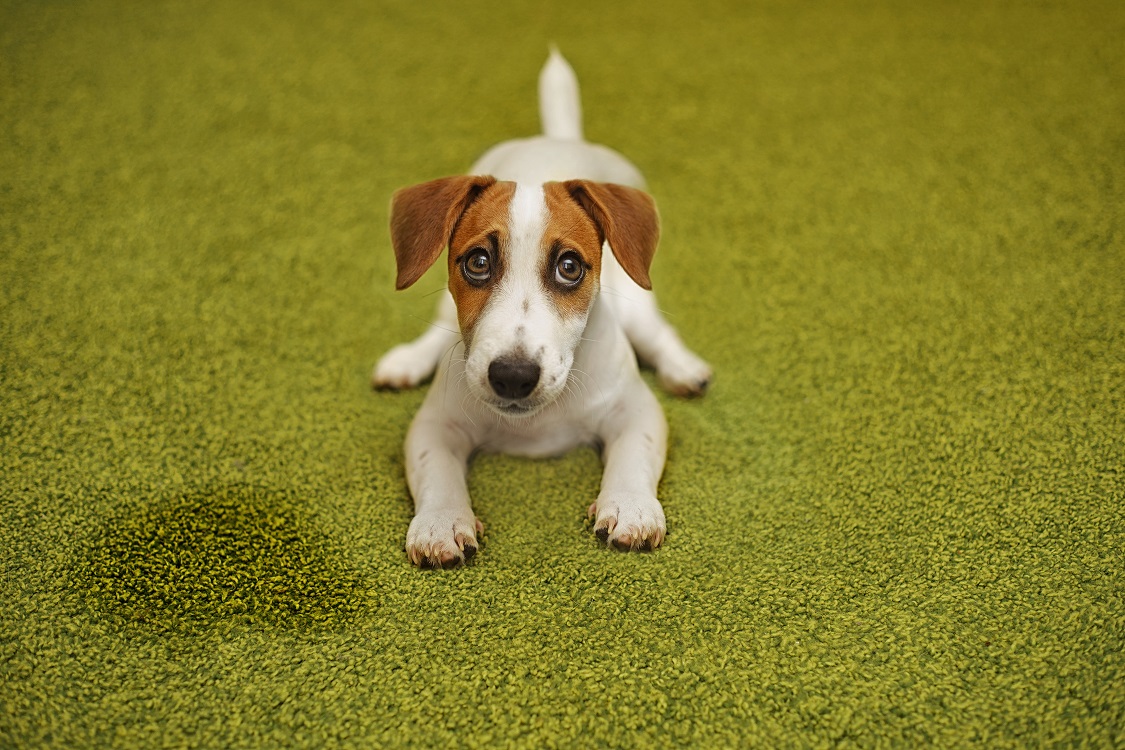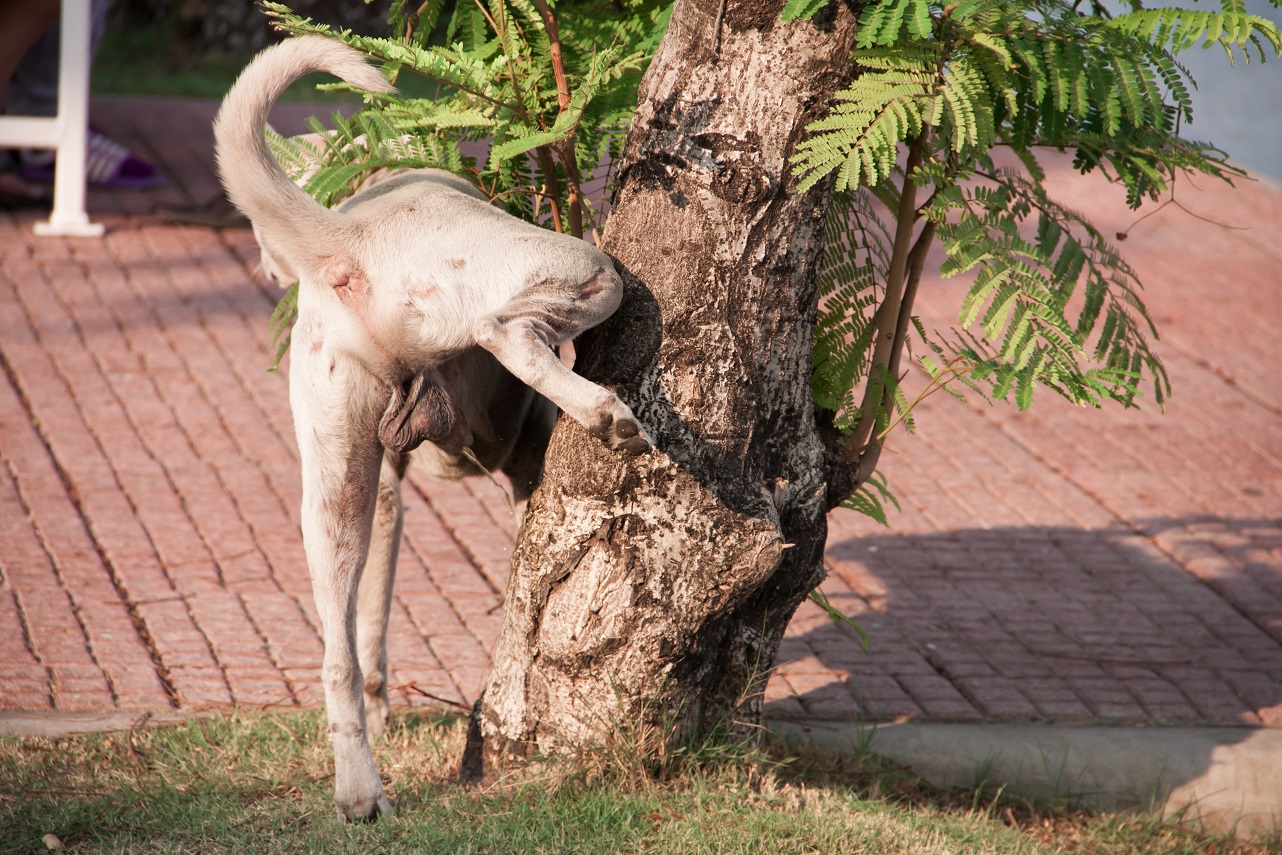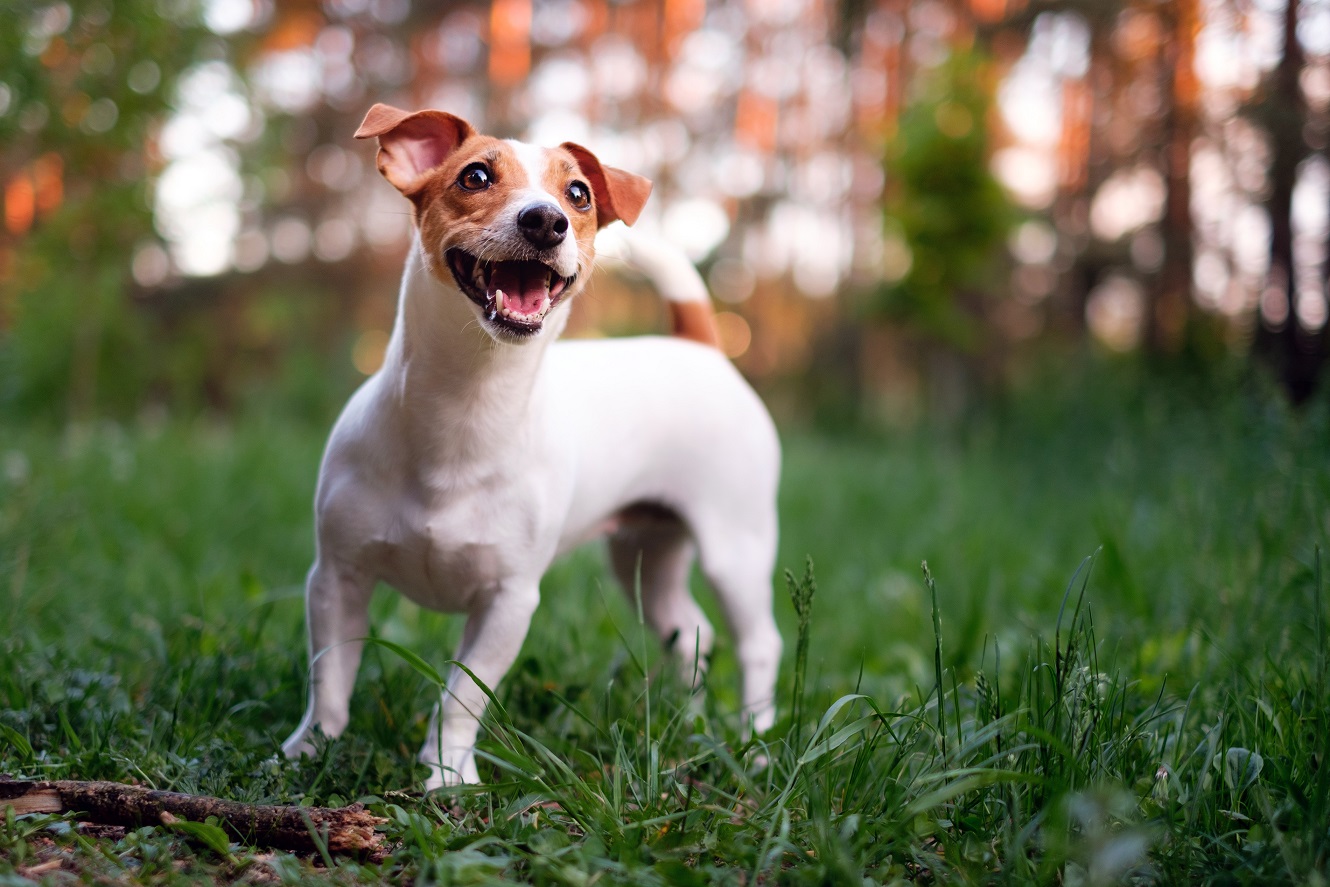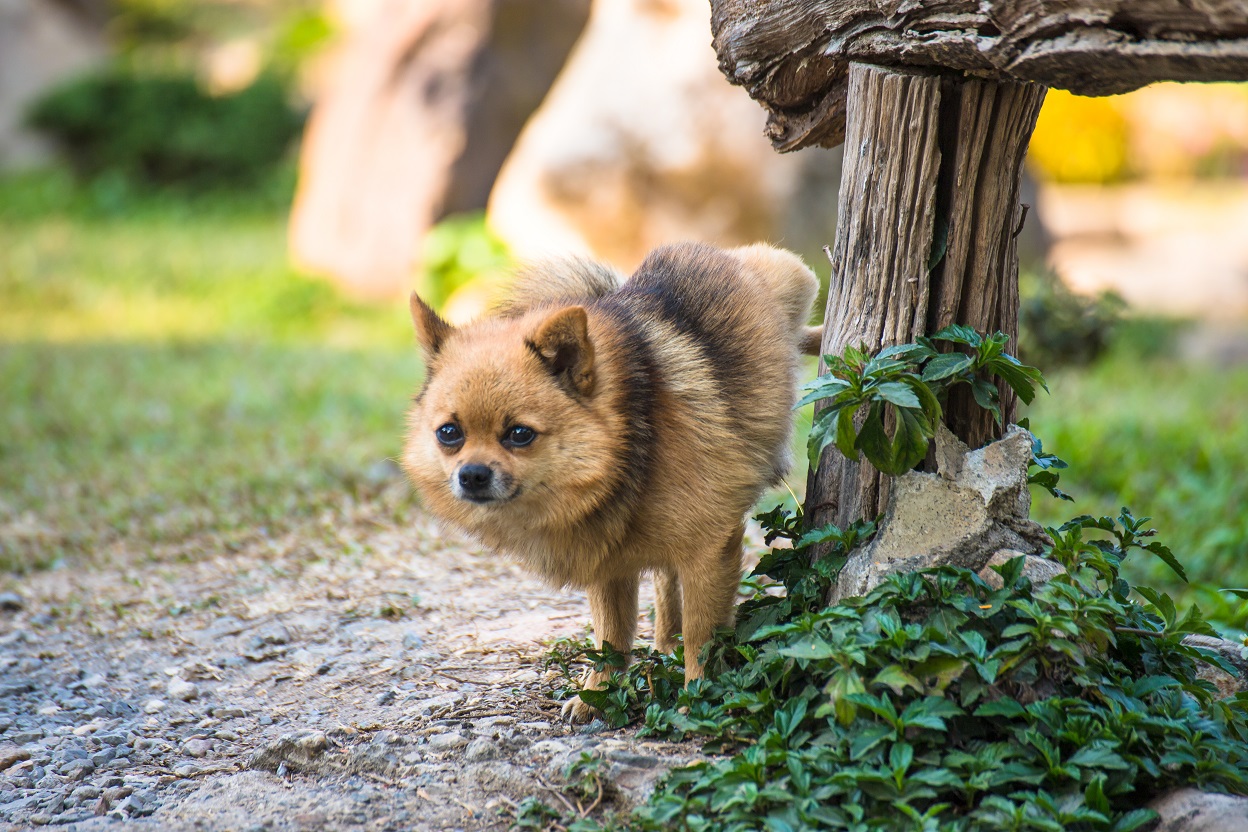If your dog won’t pee on walks, you’re probably feeling a bit confused right now.
I mean, …dog + Walk = Pee, right?
So what does it mean when dog + Walk = A Big Fat Zero?
Actually, it could mean one of several things.
You’d be amazed at how many pet owners experience the exact same problem.
Not that it always helps, of course.
If you’re spending 2 hours at the park praying for Pee and another 2 hours cleaning it up from your nice clean carpet. You’re probably way beyond caring who is and isn’t going through the same thing.
But the thing is, the more dogs who experience the same issue, the better chance we stand of connecting the dots and finding some common reasons. And the sooner you work out which of those reasons is to blame in your own case, the sooner you can start working on the fix.
Ready to get going? Then let’s start.
But before we do, a quick word of advice. Whatever the reason and whatever the eventual solution, it always helps to get as much advice as possible.
Before you risk running before you can walk, take a second to check out Potty Training Made Easy from Dan Abdelnoor (aka Doggy Dan). Once you know the ‘how’ part of training, the ‘do’ part will be so much easier.
See the video below to take a look…
(video will open in a new window)
The Reasons Why Your Dog Won’t Pee on Walks
Before you jump to the fix, take some time to understand the reason for your dog’s ‘walk-pee’ refusal. Getting inside your dog’s head might be tricky, but trust me, it’s the best way.
Understanding what’s driving your dog’s behavior puts you in the driving seat. Knowledge is power, as they say.
While every dog is unique, most of their potty issues can be explained by…
They Haven’t Been Properly Housetrained
If you’ve adopted a rescue dog, you probably don’t have a clue how they’ve been housetrained.
Some people think that effective housetraining means punishing their dog when they have an accident in the house.
‘Rubbing their nose in it,’ scolding them, yelling at them… all of these revolve around the same theme, and they’re all completely ineffective.
If a dog has been traumatized by their housetraining experience, they may be scared of going to the toilet in front of people.
And if there’s anyone around, they’ll ‘hold it in’ rather than risk being punished.
Even if you’ve never used a harsh word to them, their previous experience stops them from eliminating unless they have complete privacy.

They’ve Got Stage Fright
Imagine if someone ordered you to go to the bathroom in front of a room full of strangers. It wouldn’t feel great, would it?
And even if you tried, the stage fright would probably get in the way of any ‘productivity.’
Dogs can be just as sensitive.
Going to the toilet is a vulnerable time for a dog. And it really doesn’t help matters if someone is watching them. It’s not that they’ve got anything against you… it’s just the pressure is getting in the way of the Pee.
They’ve Got Used to One Type of Toilet
I’m going to take a gamble and say you’re used to ‘doing the deed’ in an actual toilet. With a door, a flush, and a handy supply of paper.
Now imagine if someone suddenly put a ‘closed’ sign on every bathroom door and told you to start doing your business in a public payphone.
How are you going to feel? Uncomfortable, right? Too uncomfortable to want to go, in any case.
It’s the same for dogs.
Maybe their previous owner always encouraged them to go to the toilet in one particular corner of the yard or on one particular type of surface.
If they did, the habit is probably hardwired in their brains. Going anywhere else is going to feel downright wrong.
They’re Scared of the Leash
Dogs aren’t born knowing how to walk on a leash. Neither are they born knowing it’s nothing to be afraid of.
If a dog is perfectly fine doing their business off the leash but gets shy the moment it goes on, there’s your explanation.
Unfortunately, simply letting them off the leash is rarely a solution. Even if they respond to a recall. There’s always going to be times that walking on the leash is going to be necessary.
They Don’t Need to Go
Bladders don’t always work to command. If someone schedules your pee breaks for you without considering your habits, there’ll always be times your bladder simply refuses to cooperate.
It’s the same story with dogs. No doubt they appreciate you marching them around the park every hour. But their bladders don’t necessarily need that much exercise.
Related Post: The Ultimate Guide To Potty Training A Puppy At Night

How to Get Your Dog to Pee on Walks
Before we start looking at the ways you can encourage your dog to Pee on walks, a quick disclaimer.
None of these solutions are magic bullets. Dogs are creatures of habits: if they’re in the habit of going to the toilet in your kitchen rather than on walks, it’s going to take time to break them of it.
The key? Perseverance.
If you’ve identified what’s making your dog relucent to Pee on walks, you’re halfway there. But it’s going to take a lot of patience, consistency, and tolerance before your home and dry (literally!)
If you’re ready to put in the hard work, then let’s get on with the solutions.
Pause and Rewind
When a dog refuses to do something as natural as Pee, it’s easy to get frustrated. But hey… we’ve all got our starting points. Maybe your dog’s starting point is just a bit further back than you think.
If your dog has never learned the basics of housetraining, then it’s time to rewind.
Maybe they’re a shelter dog whose previous owner never taught them. Maybe you just haven’t had time to get started on your own training routine yet. Either way, there’s never been a better time to start.
If you’ve never housetrained a dog before (or even if you just need to brush up on some existing skills), I’d highly recommend checking out Potty Training Made Easy from the Online Dog Trainer, Dan Abdelnoor.
This free course will guide you through the process from start to finish, teaching you exactly what techniques work and which ones are best avoided.
Check it out – you’ll be surprised at how much you can accomplish in just a few short minutes a day.
(video will open in a new window)
Acclimatize Them to the Leash
If your dog isn’t used to walking on the leash (or is even afraid of the leash itself), you’ll need to work on acclimatizing them to it.
The aim is to get them so used to walking on the leash, they eventually forget it’s there altogether. If your dog is very anxious, this needs to be done gradually.
Start by letting your dog familiarize themselves with the leash via their nose.
Every time they give it a sniff, reward them with a high-value treat.
Once they’ve got used to it. Attach the leash to their collar and let them walk around the house with it on. Make sure you stick around to supervise in case it gets caught or tangled.
Once they’re comfortable enough with the leash to consider it an extension of themselves, they’ll feel more inclined to go to the toilet when it’s on.
Give Them Some Space
If your pup prefers a bit of privacy while they pee, they’ll be more comfortable with a leash that allows them to put some distance between you and them.
If the leash is too short to allow them to move from your side, switch it for a long or retractable leash.
Set a Schedule
You’re not always going to be able to predict exactly when your dog is going to need to Pee, but you can take a very good guess.
As a general rule, dogs will need to eliminate shortly after they wake, after they eat, and again before bedtime. Use these timings to create a schedule for your walks.
If your dog is particularly stubborn and still refuses to go when they’re on a leash, plan a few all-day hiking adventures.
If their bladder is full and they’re out for long enough, they’ll eventually have to go.
Once they get over their initial trepidation and find there’s nothing to worry about, they’ll find it easier in the future.

Remember to Reward
Dogs love to please you. They also love a mouthful of treats. Combine the two to your advantage by rewarding each and every achievement.
Whenever they do their business on the leash, let them know how proud you are of them.
Lavish them with cuddles and reward them with their all-time favorite treat. It may seem over the top to throw a pee party, but if it works, who cares?
Dogs don’t have a moral compass to guide their behavior. But for as long as there are treats and hugs in the world, they don’t need one.
Teach Them a Cue
Sometimes, your dog knows exactly what you’re thinking. But there’s plenty of other times when they really don’t have a clue.
Make it obvious.
Pick a word or phrase that you can use whenever you want your pup to go to the toilet.
It could be ‘good poop’, ‘go pee’, or something similar. It doesn’t have to be Shakespeare, it just has to be something that’s associated with the act, and that’s clear enough for your dog to understand.
Each time they respond to the cue with the desired action, reward them. They’ll soon learn that peeing isn’t nearly as bad as they think.
Find Their Perfect Spot
If your dog does eventually relent and release their bladder on a walk, make a note of the spot. Dogs are creatures of habit: once they find their sweet spot, they’re more likely to want to pee there again.
Next time you go for a walk, head to the same spot.
Gradually, you can work on making every spot just as attractive with the help of plenty of treats and positive reinforcement.

Ask for Help
Some dogs are always going to be tougher nuts to crack than others. This isn’t your fault, and it isn’t your dog’s fault either. It’s just the way the cookie crumbles.
If you’ve tried all the techniques but aren’t getting anywhere, it might be wise to seek outside help from a dog behavioralist or trainer.
You might also want to get your pet checked over by a vet in case they have any physiological issues that need to be treated.
Closing Thoughts
No one is going to say that having a dog that doesn’t pee on walks isn’t hugely frustrating. It is.
It’s also massively frustrating having to spend half your life cleaning up urine from your carpet.
But remember – your dog isn’t doing this to spite you. And they aren’t doing it because they think it’s fun to rebel.
They’re doing it because they don’t know any better. Or maybe because they think the consequences of peeing are worse than a bursting bladder.
Either way, you’ve got the power to teach them otherwise.
It’s going to take time, patience, and plenty of positive reinforcement. But it’s worth it – for the sake of your carpet if nothing else.

